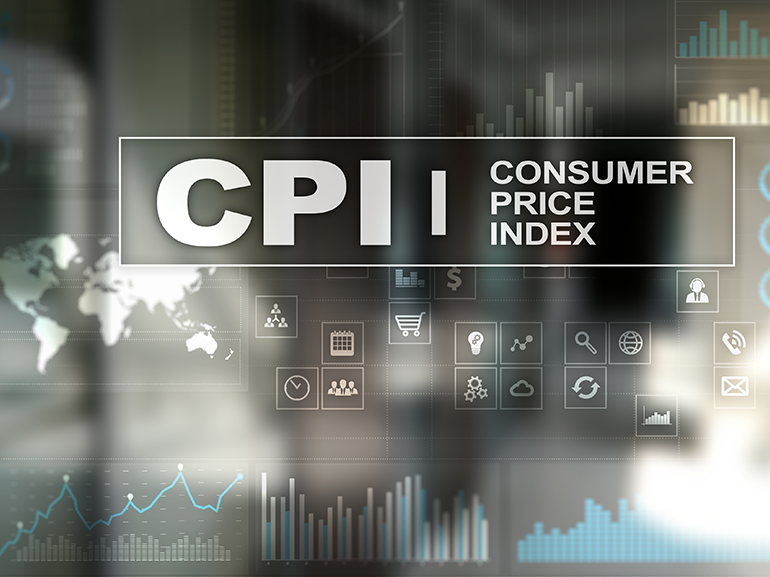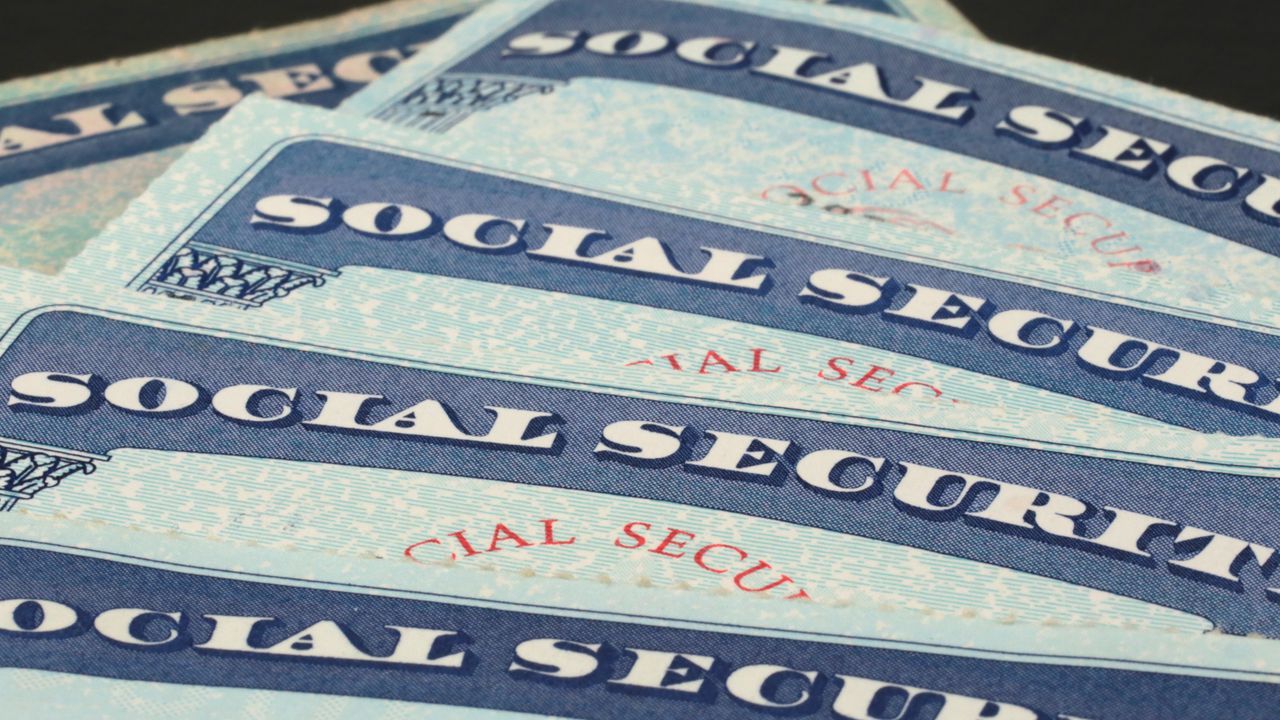Inflation rises for second straight month in August on higher gas costs

Inflation accelerated for a second month in August on a spike in gasoline prices and an underlying measure of household expenses rose more than anticipated, highlighting that the Federal Reserve’s battle to tame consumer prices may not be over.
Goods such as used cars and furniture kept drifting down in price, partly offsetting a climb in rent, travel and other services.
Inflation posted its biggest monthly increase this year in August as consumers faced higher prices on energy and a variety of other items.
The consumer price index, which measures costs across a broad array of goods and services, rose a seasonally adjusted 0.6% for the month, and was up 3.7% from a year ago, the U.S. Department of Labor reported Wednesday. Economists surveyed by Dow Jones were looking for respective increases of 0.6% and 3.6%. The two numbers were up 0.2% and 3.2% in July.
However, excluding volatile food and energy, the core CPI increased 0.3% and 4.3%, respectively, against estimates for 0.2% and 4.3%. Federal Reserve officials focus more on core as it provides a better indication of where inflation is heading over the long term. Core was up 0.2% and 4.7% in July.
Energy prices fed much of gain, rising 5.6% on the month, an increase that included a 10.6% surge in gasoline.
Food prices rose 0.2% while shelter costs, which make up about one-third of the CPI weighting, climbed 0.3%. Within shelter, the rent of primary residence index rose 0.5% and increased 7.8% from a year ago. Owners equivalent rent, a key measure that gauges what homeowners believe they could get in rent, increased 0.4% and 7.3%, respectively.
Elsewhere in the report, airfares jumped 4.9% but were still down 13.3% from a year ago. Used vehicle prices, an important contributor to inflation during its rise in 2021 and 2022, declined 1.2% and are down 6.6% year over year. Transportation services rose 2% on the month.
Excluding shelter from CPI would have resulted in an annual increase of only about 1%, according to Lisa Sturtevant, chief economist at Bright MLS.
“Housing continues to contribute an outsized share to the inflation measures,” Sturtevant said. “Rent growth has slowed considerably and median rents nationally fell year-over-year in August. … However, it takes months for those aggregate rent trends to show up in the CPI measures, which the Fed must take into account when it takes its ‘data driven’ approach to deciding on interest rate policy at their meeting … later this month.”
Stock market futures initially fell following the report then rebounded. Treasury yields were higher across the board.
The jump in headline inflation hit worker paychecks. Real average hourly earnings declined 0.5% for the month, though they were still up 0.5% from a year ago, the Labor Department said in a separate release.
The data comes as Federal Reserve officials are looking to stake out a longer-term approach to solving the inflation problem.
In a series of increases that began in March 2022, the central bank has boosted its benchmark borrowing rate by 5.25 percentage points in an effort to tackle inflation that had been running at a more than 40-year high in the summer of 2022.
Recent remarks from officials have indicated a more cautious approach ahead. Whereas policymakers had preferred to overdo monetary policy tightening, they now see risks more evenly balanced and appear more cautious about future hikes.
“Overall, there is nothing here to change the Fed’s plans to hold interest rates unchanged at next week’s [Federal Open Market Committee] meeting,” wrote Andrew Hunter, deputy chief U.S. economist at Management Economics.
Markets largely expect the Fed to skip a hike at next week’s meeting. Futures pricing has been volatile beyond that, with traders putting about a 40% probability of a final increase in November, according to CME Group data.
Inflation data this week
Consumer prices overall rose 3.7% from a year earlier, up from 3.2% in July, according to the Labor Department’s consumer price index. That’s the second straight bump after 12 consecutive declines in annual inflation.
On a monthly basis, prices increased 0.6%. That followed a 0.2% rise in July and marked the biggest jump in more than a year. The chief culprit was a surge in gas costs.
What is core inflation?
Core prices, which exclude volatile food and energy items and which the Fed watches more closely, are still elevated and rose 0.3%. Economists expected a repeat of the prior month’s 0.2% advance. The rise still moderated the annual increase to 4.3%, down from 4.7% in July and the smallest gain since September 2021.
Will inflation go down?
Annual inflation has slowed notably after hitting a 40-year high of 9.1% in June 2022. But lowering it the rest of the way to the Fed’s 2% target is expected to pose a thornier challenge. While goods prices have fallen as pandemic-related supply chain bottlenecks have dissipated, the cost of services such as car repairs and recreation have leaped, chiefly because of increasing employee wages.
Will the Fed raise rates again in September?
As a result, Barclays expects the Fed to raise its key interest rate once more this year, by a quarter percentage point, after lifting it by 5.25 points in 16 months. That marks its most aggressive inflation-fighting campaign in four decades.
Kathy Bostjancic, chief economist of Nationwide, says Wednesday’s report isn’t enough to convince the Fed to veer from its plan to hold rates steady at a meeting next week but it could help persuade officials to hike again in November, depending on how inflation and the job market evolve.
Others say the Fed is done. Forecasters at Pantheon Macroeconomics and Management Economics believe softer rent increases and a slowing economy and job market in coming months will lead the Fed to stand pat the rest of the year.
Consumers, meanwhile, are still struggling with high prices. Although wage growth recently started outpacing inflation, many Americans say they aren’t feeling the benefits.
Will gas prices keep getting higher?
Gasoline prices rose 10.6% in August, though they’re down 3.3% from a year earlier. Pump prices are well below their $5 peak a year ago but are expected to move higher this year on a more positive global economic outlook and OPEC oil production cutbacks.
Are food prices going to go down in 2023?
Grocery prices rose more modestly, edging up 0.3% and lowering the yearly increase to 3%. The cost of commodities such as wheat and corn generally have fallen because of easing global demand, though drought and wildfires in the western U.S. recently have crimped supplies and nudged some prices higher. .
Last month, the price of breakfast cereal fell 1.1%, bread slipped 0.8% and eggs tumbled another 2.5%. That’s the sixth straight monthly decline for eggs after a spate of sharp bird flu-related increases, and costs are now down 18.2% over the past year.
But some proteins moved higher. Bacon rose 4%; chicken, 1.3%; and fish and seafood, 0.9%.
Will rent go down in 2023?
Rent, which has been the biggest inflation driver this year, accelerated, rising 0.5% in August though that’s still down from a flurry of stronger increases. Annually, the increase eased to 7.3%. Economists expect rent increases to pull back, based on new leases, but that shift has been slow to filter through to existing leases.
Some other service prices also climbed higher. Airfares surged 4.9% on higher jet fuel costs after a string of declines. Hospital services rose 0.7%; car repairs, 1.1%; and auto insurance, 2.4%. Broadly, a core index of service prices that’s tied closely to wage growth and that the Fed is watching closely accelerated, rising 0.5%, according to High Frequency Economics.
More encouraging: Used car prices and furniture both dropped 1.2% and hotel rates declined 3%.
COLA 2024
Social Security recipients can expect their cost of living adjustment (COLA) to jump 3.2% next year according to a new forecast made in the wake of Wednesday’s report showing inflation rose last month. That’s up from the previous estimate of 3%.
While inflation has ticked up each of the last two months and is higher than the Federal Reserve’s target of 2%, the rate of price increases has generally been dipping over the last year which means the benefits adjustment is slight, according to projections from The Senior Citizens League, a nonprofit seniors group.

Still, the updated increase would be higher than the 2.6% average seen over the past two decades though much lower than the 40-year COLA high of 8.7% this year.
“The harsh reality is that the amount that the COLAs increase benefits in most years is meager at best,” said Mary Johnson, Social Security and Medicare policy analyst at The Senior Citizens League.
Is a recession still coming?
There’s a good chance not, but the odds are greater in some parts of the country than others.
The likelihood of the U.S. experiencing a recession by the middle of next year has significantly lessened recently as economic and job growth have remained strong, and inflation has eased.
But some regions of the country are more vulnerable to a downturn than others.
The West and South saw the biggest price surges during the COVID-19 pandemic, particularly when it came to buying a home and broader inflation, and are now most likely to slide into a downturn, according to Moody’s Analytics.
The pandemic accelerated existing trends that already saw people moving to those regions to take advantage of their mild climates and lower costs of living. When the opportunity to work remotely increased during the health crisis, more picked up and moved to less populated communities.
How does raising rates lower inflation?
The federal funds rate is what banks pay each other for overnight loans. If that rate rises, banks typically pass along that extra cost, meaning it becomes more expensive to borrow as rates increase on services and items ranging from credit cards to home equity lines. That’s why the funds rate is the primary tool used by the Federal Reserve to try and put the brakes on inflation.
When it costs more to borrow, businesses and consumers are less inclined to do it, and that means an overheated economy can cool and price increases may slow.

